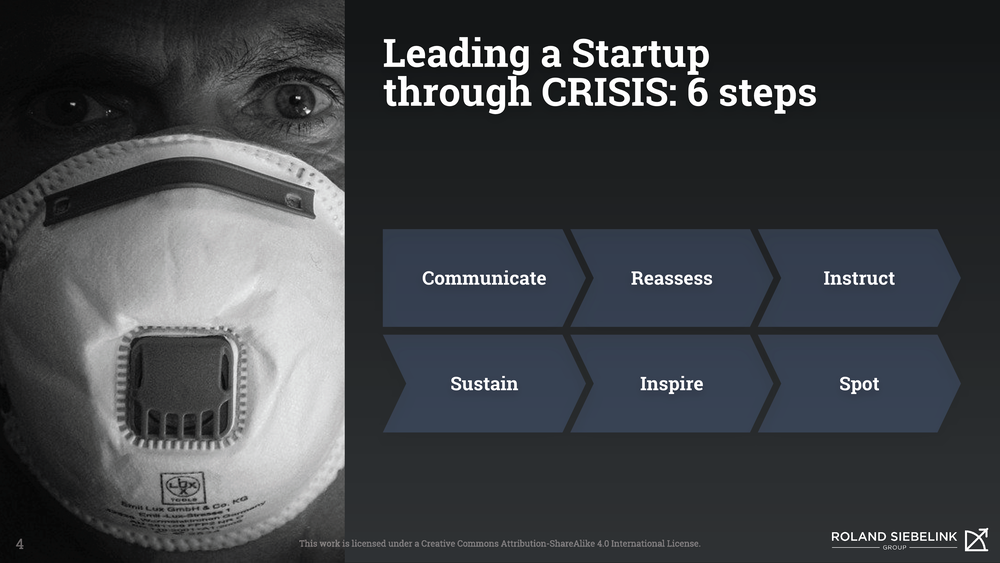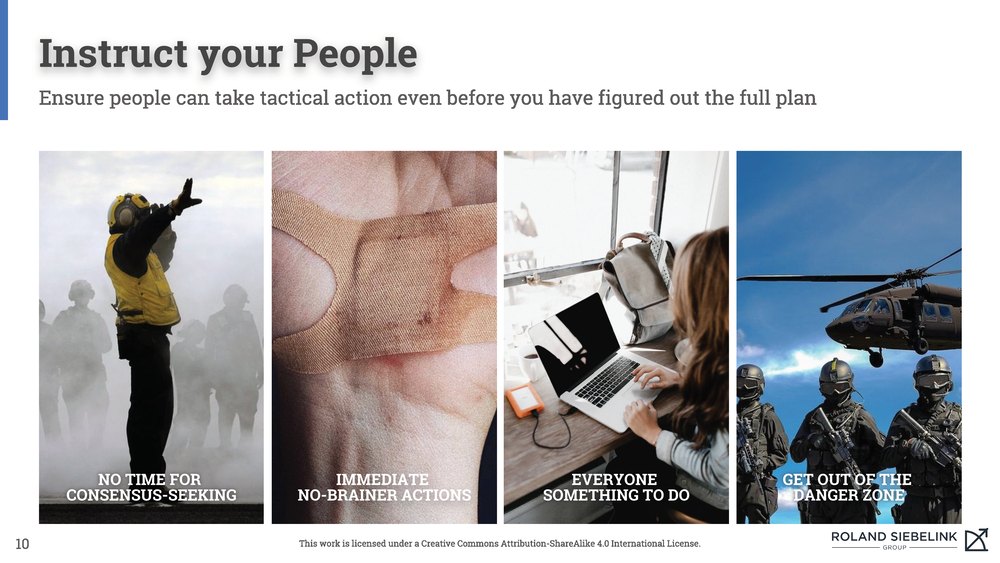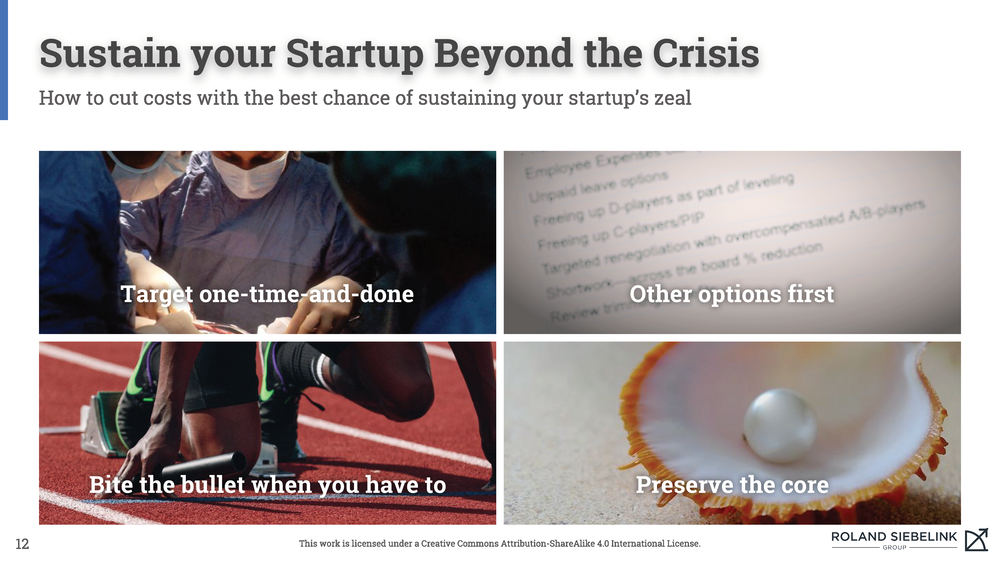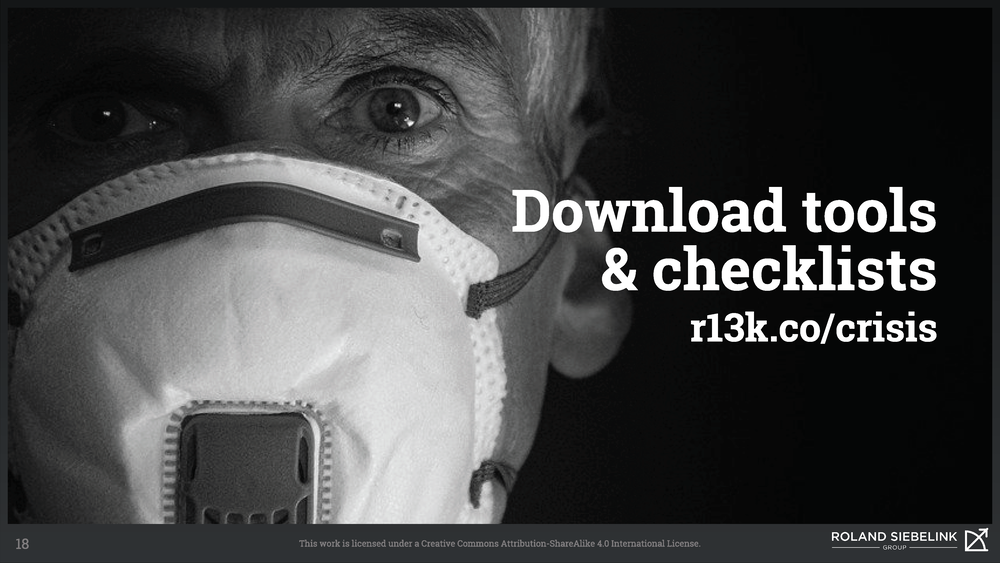Leading your Startup through C.R.I.S.I.S.—Overview
These are challenging times. Many are worried about the very survival of their startup. Worried if they’re doing the right thing by their employees, by their customers, their suppliers. Worried if they’re even focused on the right way of bringing their startup through this crisis.
So I thought I’d collect a few tips and levers that help everyone around the world leading a startup, doing better in leading their startup through a crisis. The acronym I found for this is very simple. It’s crisis. So I see these six buckets: Communicate, Reassess Reality, Instruct your People, Sustain the Business, Inspire Action, and then Spot Opportunities.

Let’s go through these one by one. Now I will be doing detailed videos and blog posts for each of them in the coming days. So for now, this is just a key overview. Please stay posted for any more detailed videos and tools that we’d like to add to this. Communicate. First of all, this is very counterintuitive to many founders.

Why communicate if you don’t know what to say yet?
Well, it’s exactly because nobody knows what to say. What to think in those days, people have a craving to see their leaders, and even if you don’t quite know what to say, connecting with people, sending out a daily video, even if it’s just 90 seconds, is so crucial for people to see that their leaders are as worried as they are, that they’re on top of things.
Be visible every day. Answer some questions where you can, or if you cannot, just be honest and say why you cannot. Be clear about what you know and what you don’t know and set up a crisis team so it not just you along trying to solve everything, but to have people that are all on top of the questions that you’re facing and the answers that you must give.

Now, once you have that basic infrastructure of communication and a crisis team in place where you really want to start reassessing reality. My recommendation is start with the customer value assumption. Are you still providing the same customer value to your customers? Do you still have to same amount of money to keep your business model flowing?
That results in cash flow projections in these challenging times, I recommend a minus 25% a minus 50% even at minus 75% scenario just to have all bases covered. What are the truths that you have to give up on in some of these scenarios? So what parts of reality have you really reassessed? And then to what trigger points does this lead? So can you then derive from the news, if this happens, this means that we’ll need to switch to that particular scenario.

So while you reassess, it’s important to also give people clear instructions. This is not a time when people look for they big consensus seeking exercises. They just make them feel insecure. They want to get instructions and want to get on with it. So try to do the immediate no-brainer actions, especially those that help to get the company out of the danger zone and try to give everyone something to do, even if it’s not a big thing yet, and a big project that’s not ready yet. Make sure that everyone has something to do, something to contribute so that they can at least feel secure and safe.

Sustain the business. This is probably the one I get the most questions about. Do you need a layoff, for example? Well, my advice is your cash flow projections will tell you, and I also recommend only bite the bullet when you have to. There’s many, many different alternative actions that can help you save substantial costs where you can avoid a layoff, and if you can afford it, it’s often better, especially in a startup situation where our layoff may actually destroy a lot of the credibility you have with the employee base.
If you do have to do a layoff, then target one time and done. So cut a little bit deeper than what you really need right now. So that you don’t need another one a few months later. Preserve the core of your business model, your core competence, your passion, and your economic engine, and then also make sure to differentiate by function, which functions are more crucial for short term survival versus others, and then also by levels. So make sure that proportionally higher earners, higher level hierarchy gets affected more than the front line.

Now after that’s done and you’ve gone through the difficult phase, it’s time to start inspiring again. And my advice is really to start small, take care of survivors, but also take care of victims, have them access your network, recommend them to people.
While the overall economy is down, it may make it very hard for people to find a job right away. If we do get that V curve after the virus spread is starting to subside, it may actually be a connection you make today that gets people another job in three months time or six months time.
Support the community. So offer some products for free, especially to those in need, such as schools that have subtly started to work remote and highlight hope and heroes. Hope in the sense of snippets of good news that you see, especially if they’re fact checked and heroes, those people within your company that do day-to-day ground work and keep doing it.
Those are the best to highlight. So stay small and stay inspirational. Finally, refocus on the purpose of the company. What was the real reason you started this business in the first place before you started thinking of your next round and the profits you would be making at some point in time? Refocus on what were you actually trying to change in the world. And can you still do that with fewer people or a more focused team?

Once you have that inspiration going again, I think it’s time finally to start spotting new opportunities. So there may be opportunities in new kinds of business in certain areas that have become less crowded, in new segments that have become available onto the market. So start pitching your own team before you start going outside. Use it to sharpen your unique Business Model. So rather than expanding it, stay very focused because you have a more focused team now and benefits from a buyer’s markets.
So. It is now a markets where suddenly a lot of people are offering their services for recruitment. A lot of people with real estate to offer, other big assets are pretty desperate to get you to buy into it. So you can benefit from a much more attractive markets.
Finally, there may be opportunities for consolidation. So not every competitor will be on top of things as much as you are, and therefore, some may be looking to be acquired. So many, you can go out of business and there’s market share to be one.
So spotting opportunities. The last phase of this crisis model, I do recommend you wait with that until you’ve gone through all the other phases. So this is primarily a linear model to go through, but of course all the time you want to keep communicating with your team, be visible every day, answer questions, be clear about what you know and don’t know and keep that crisis team in charge.

I hope this helps you in leading your startup through crisis. We will be publishing detailed videos on each of these points in the coming days, but in the meanwhile, please reach out to me if you have any questions. I offer free coaching to startup founders that everyday are in need of somebody to talk to.
So just reach out and book a slot with me and I hope to hear from you soon.